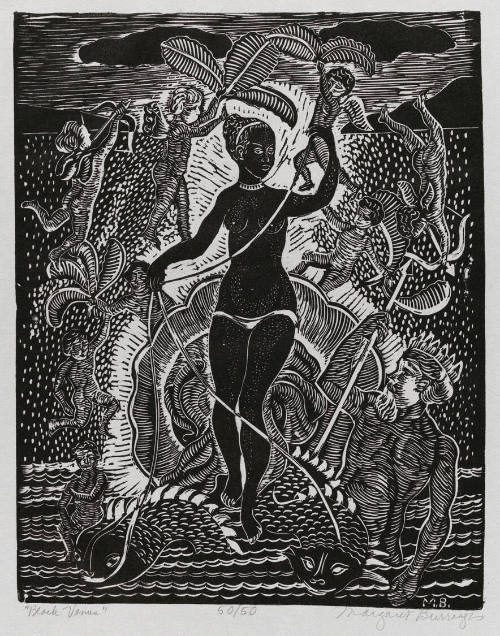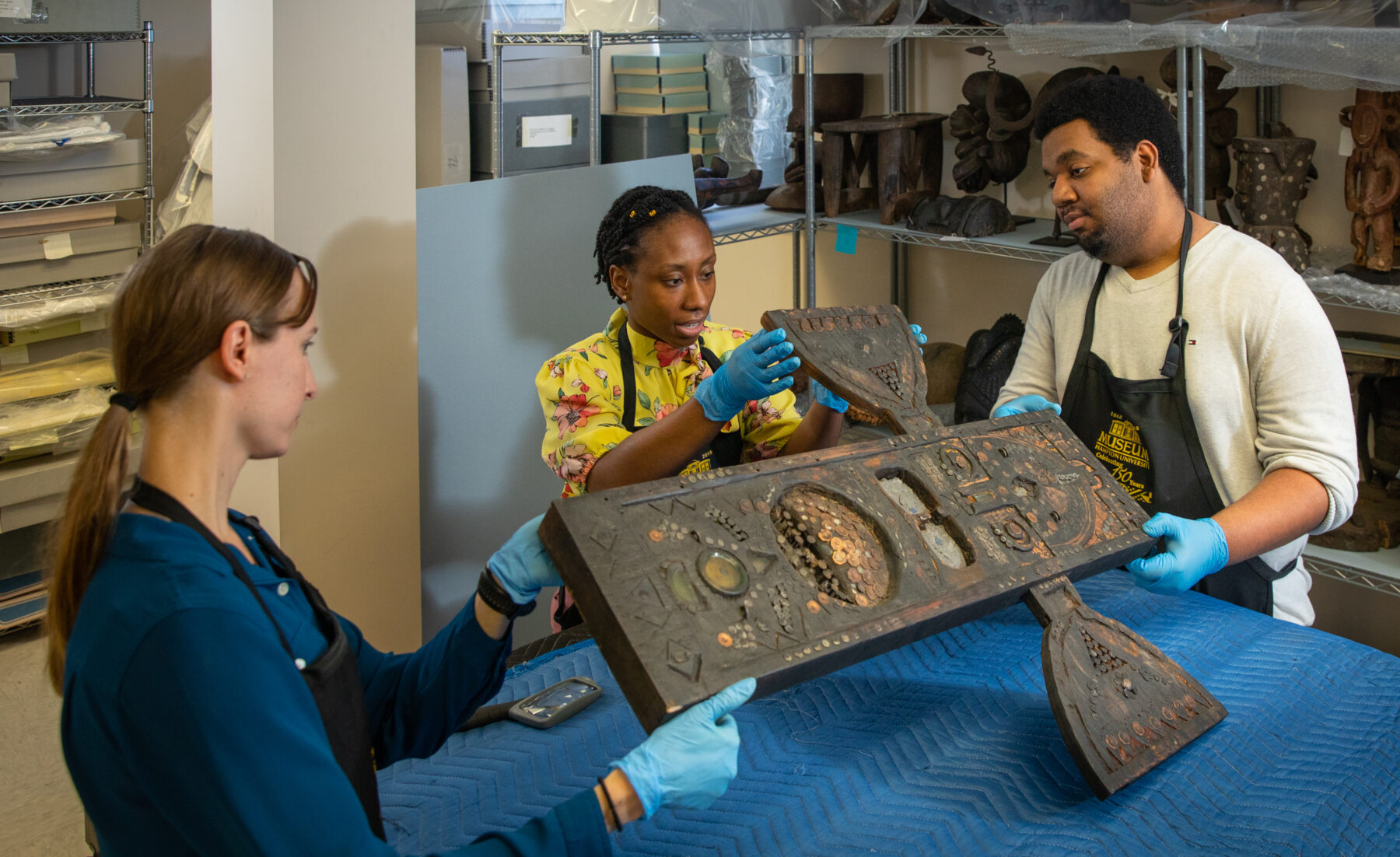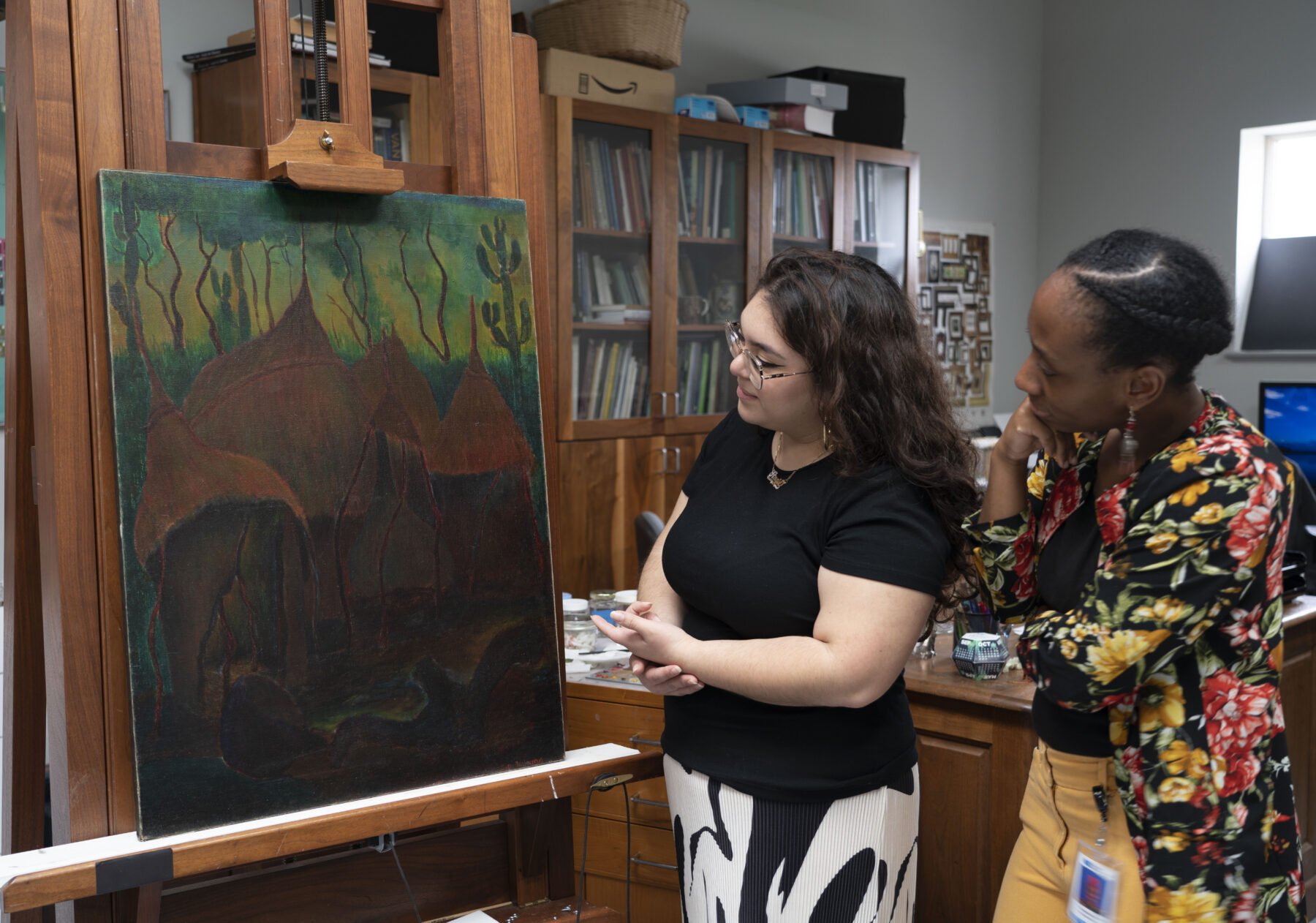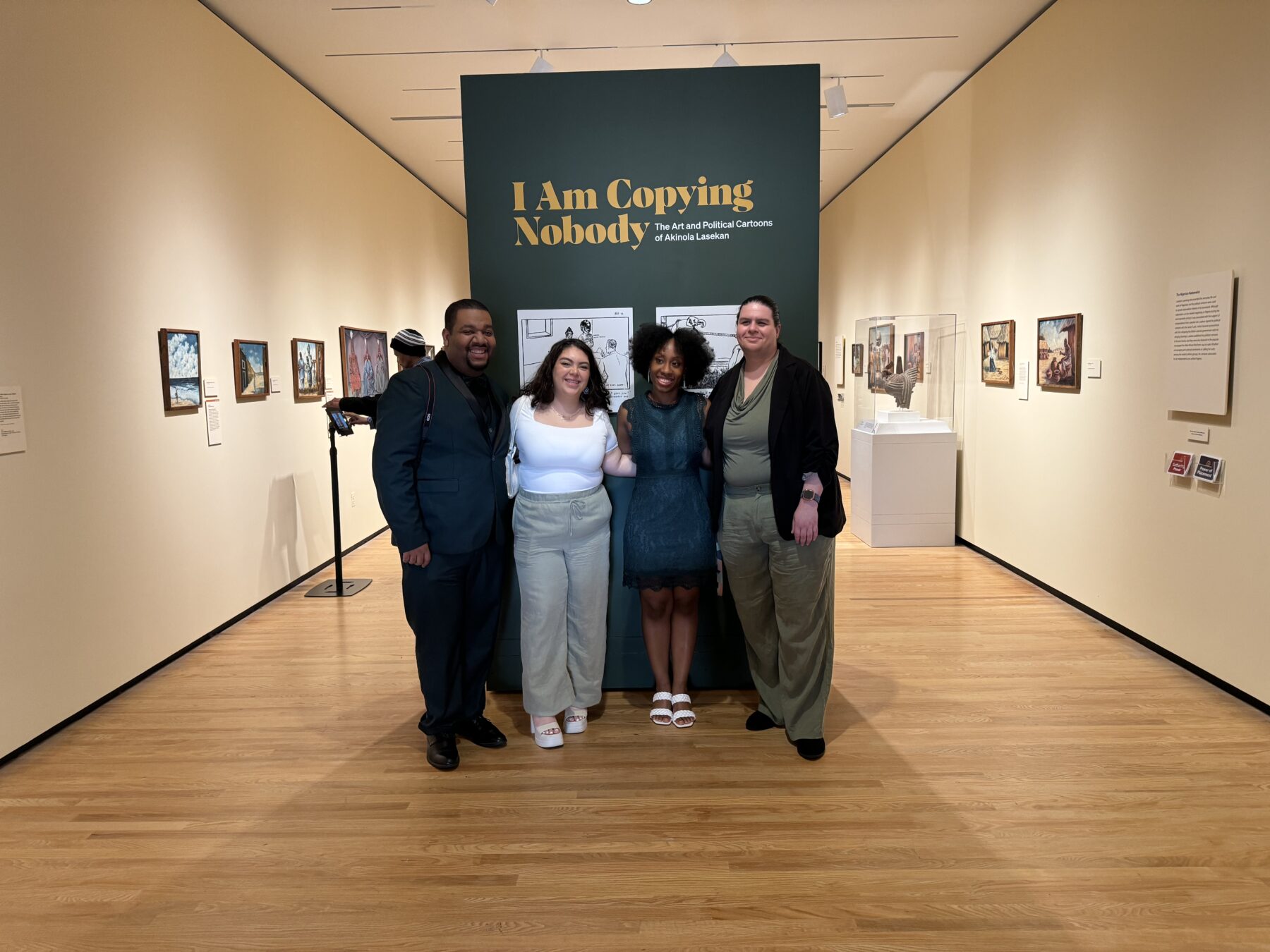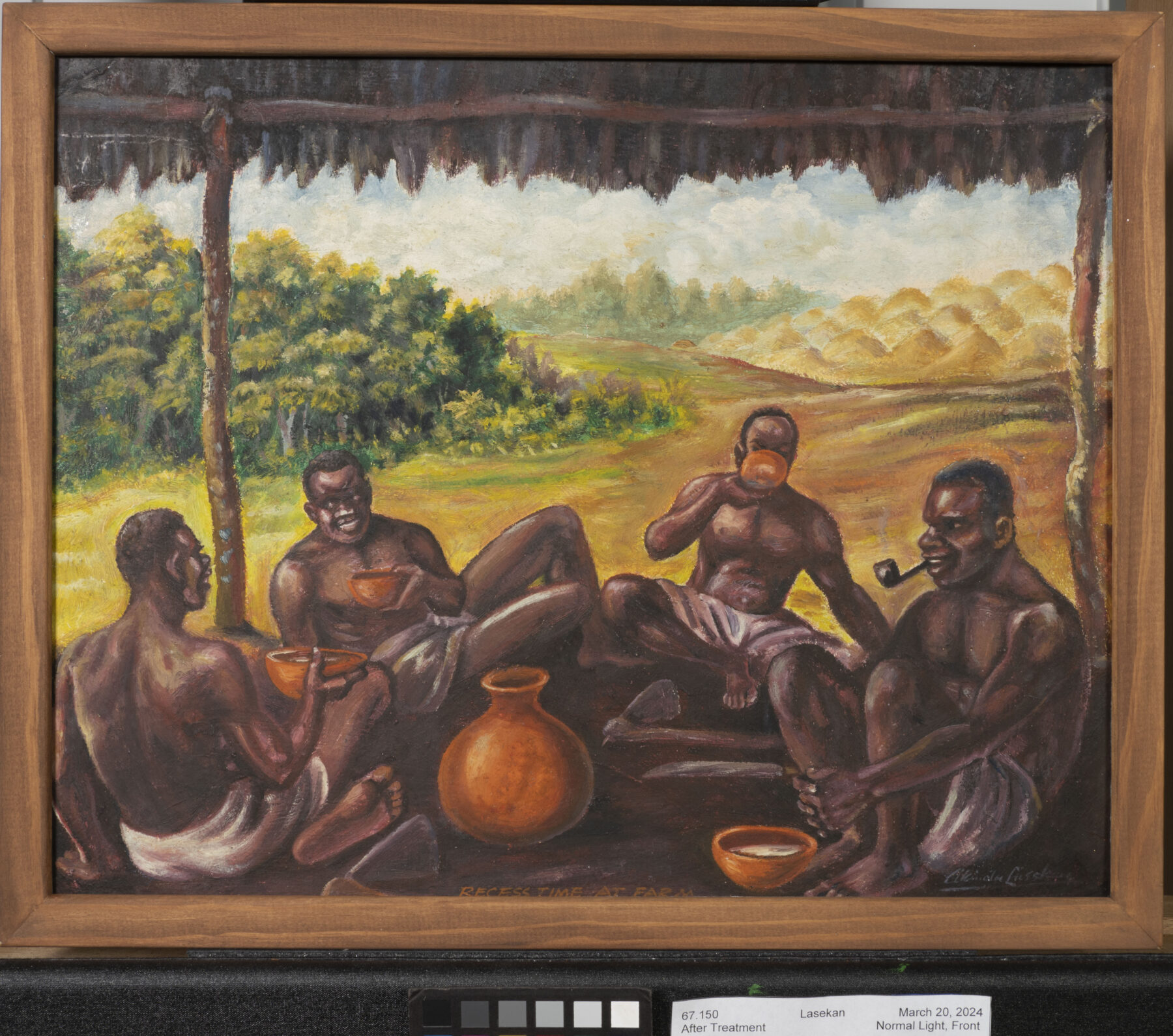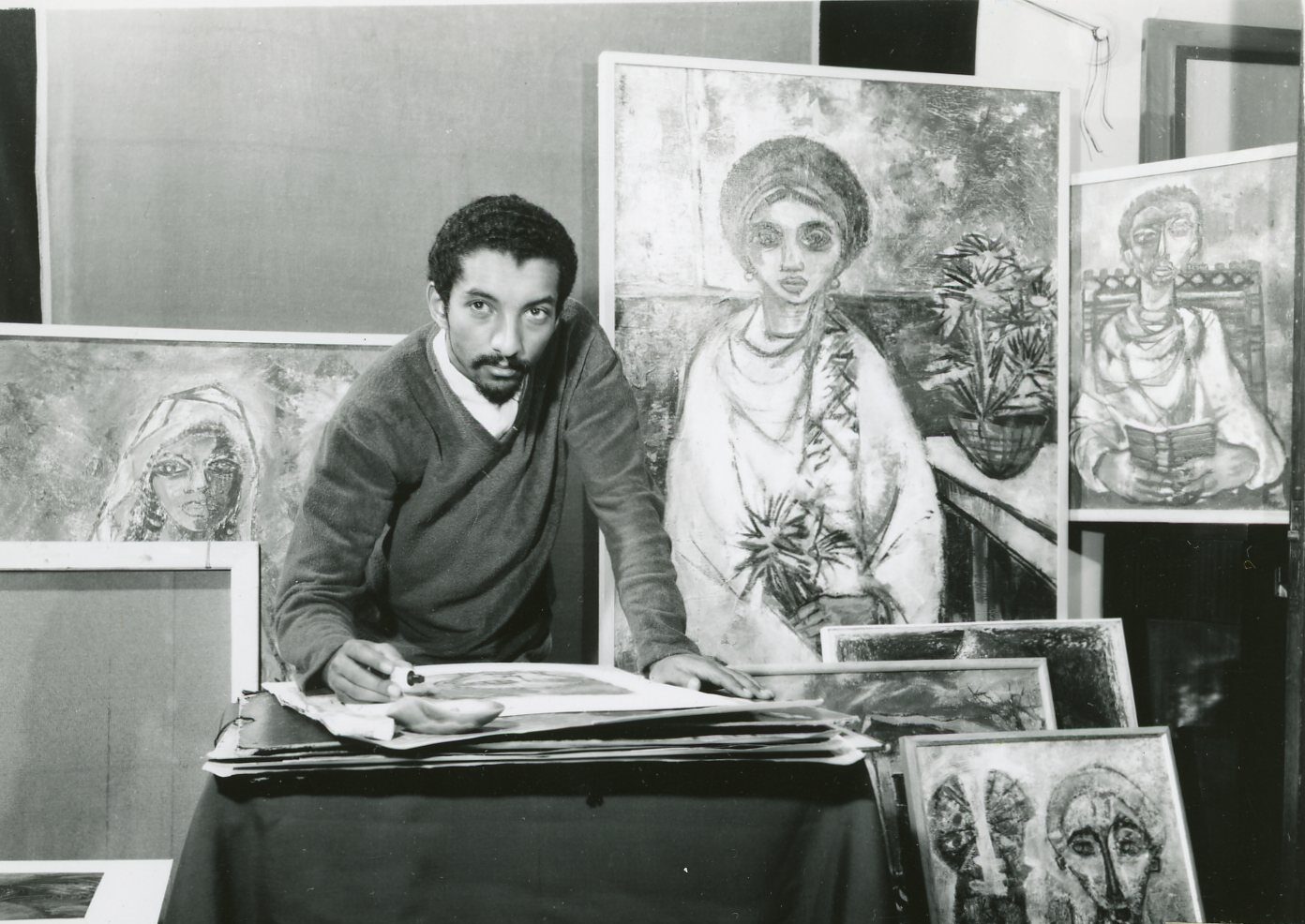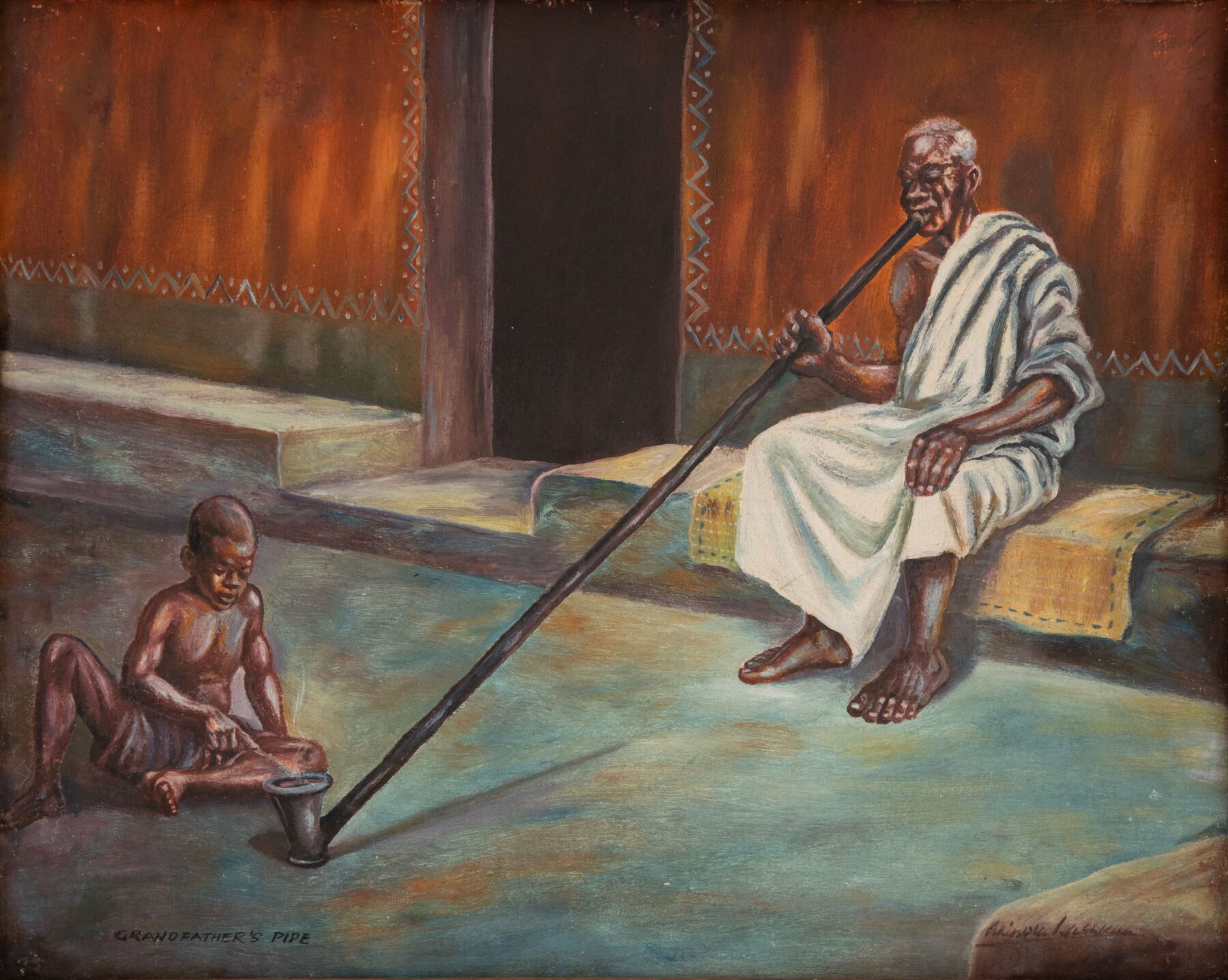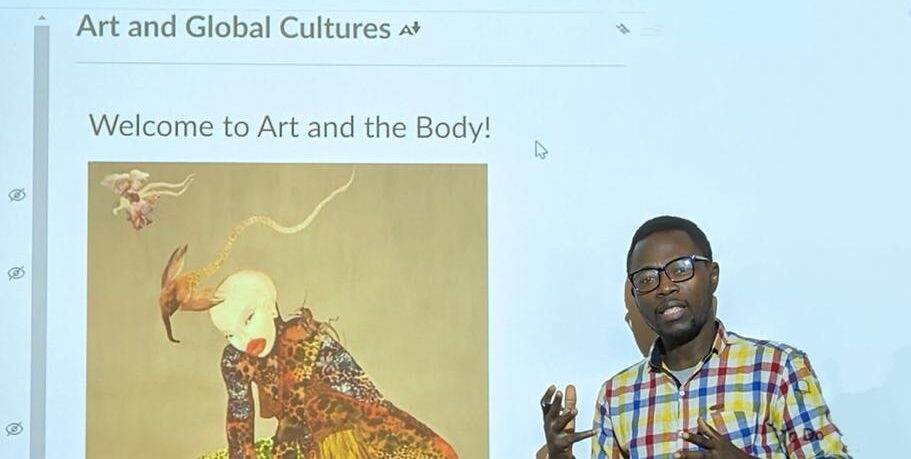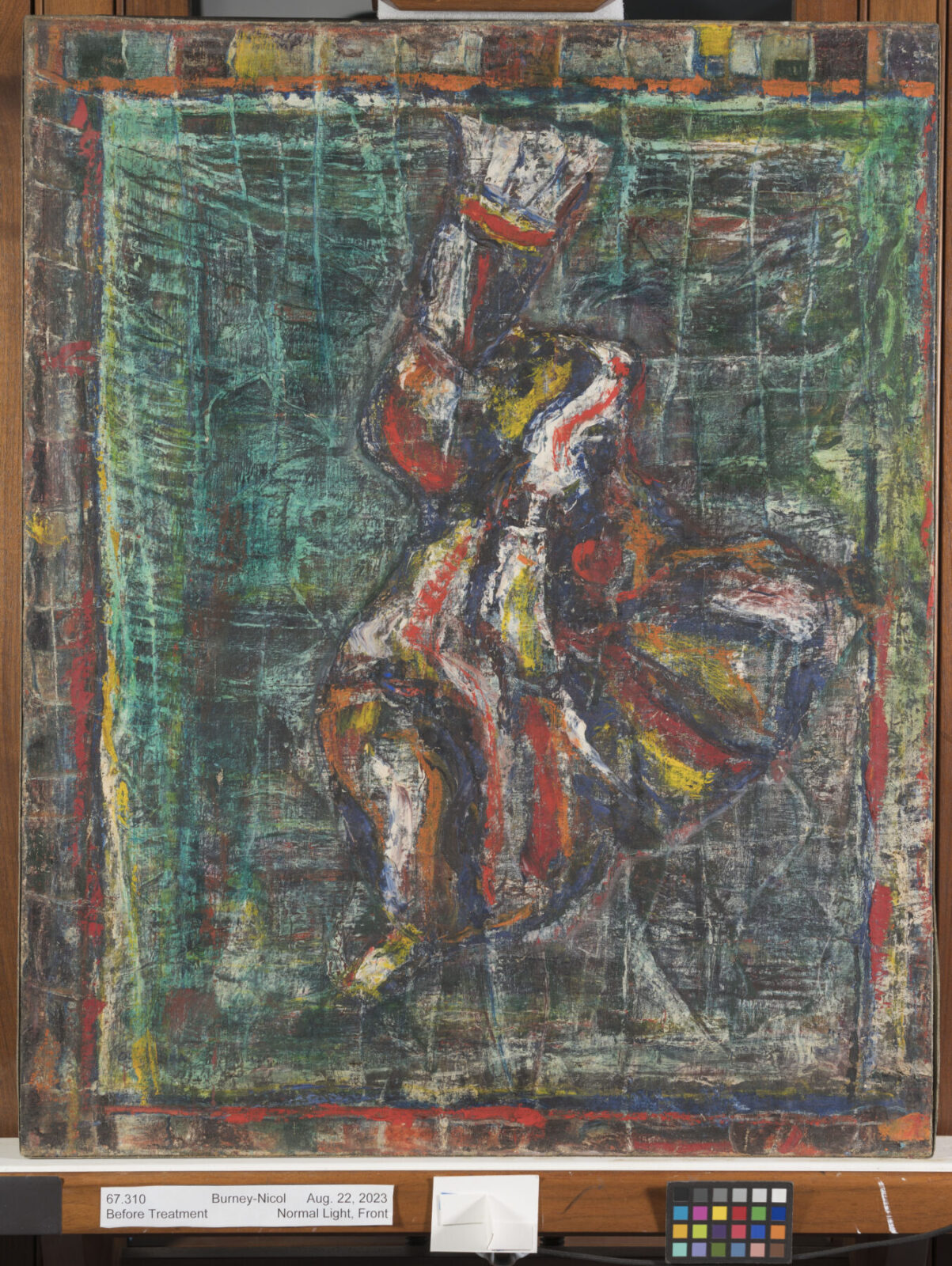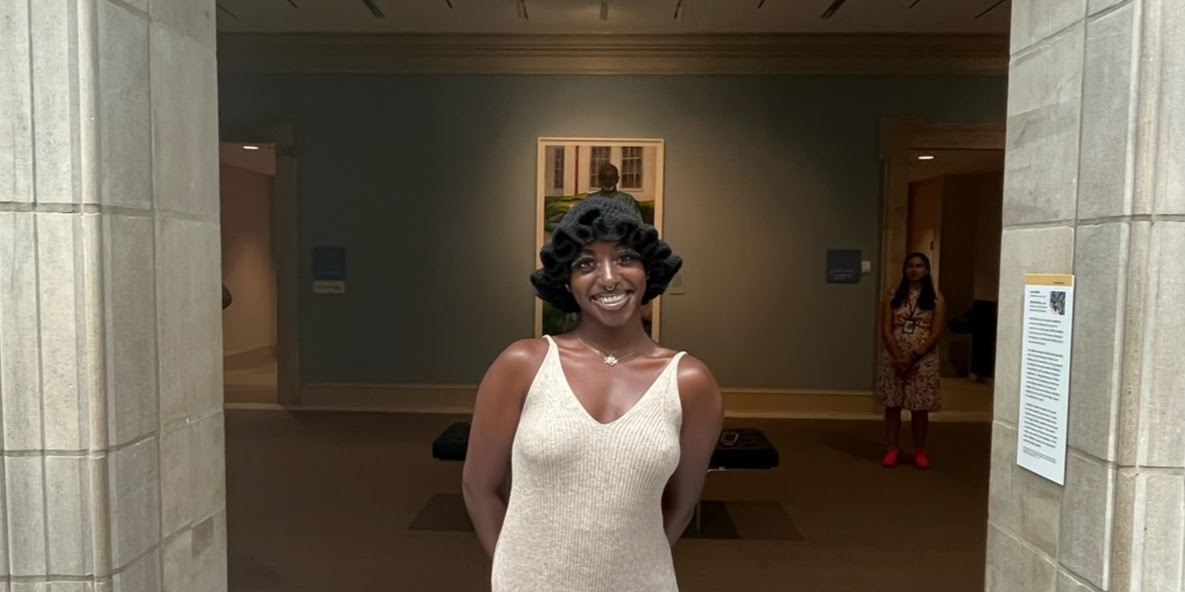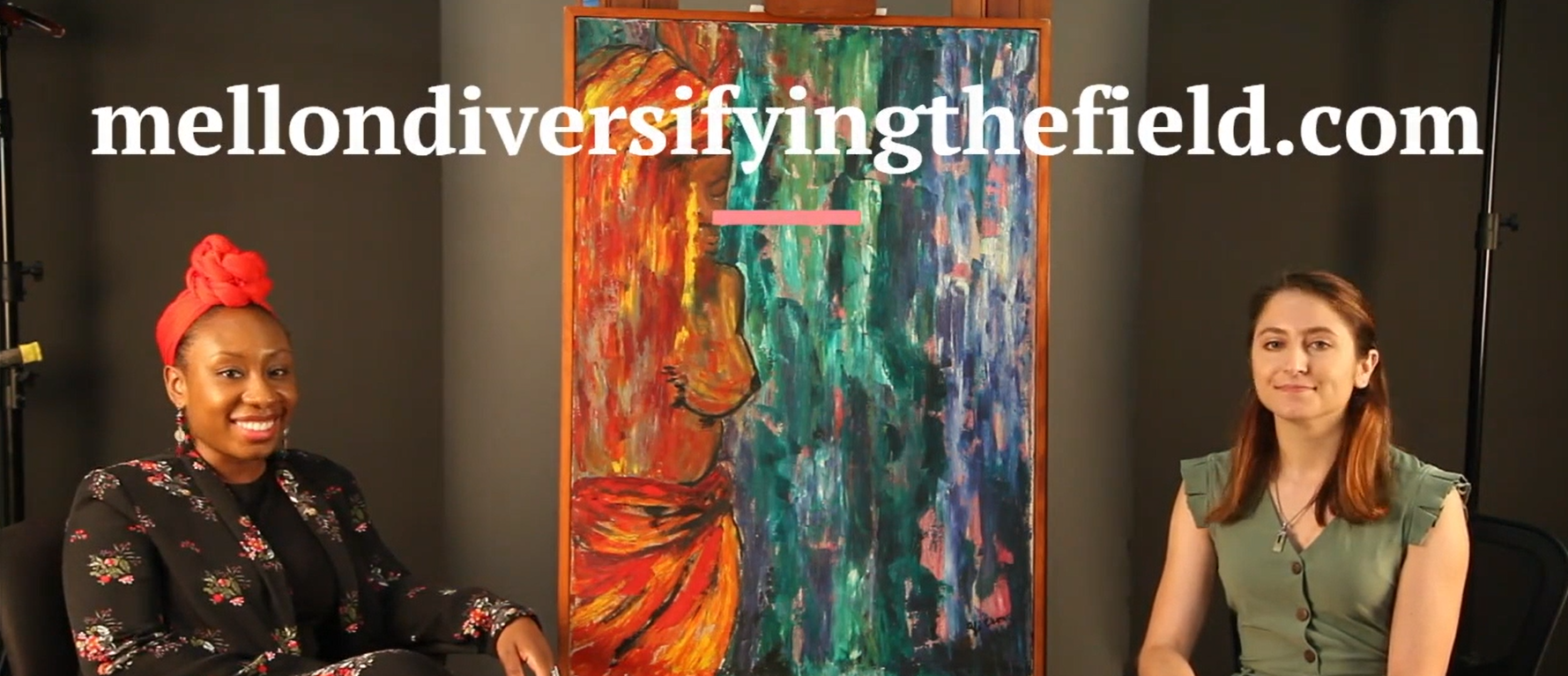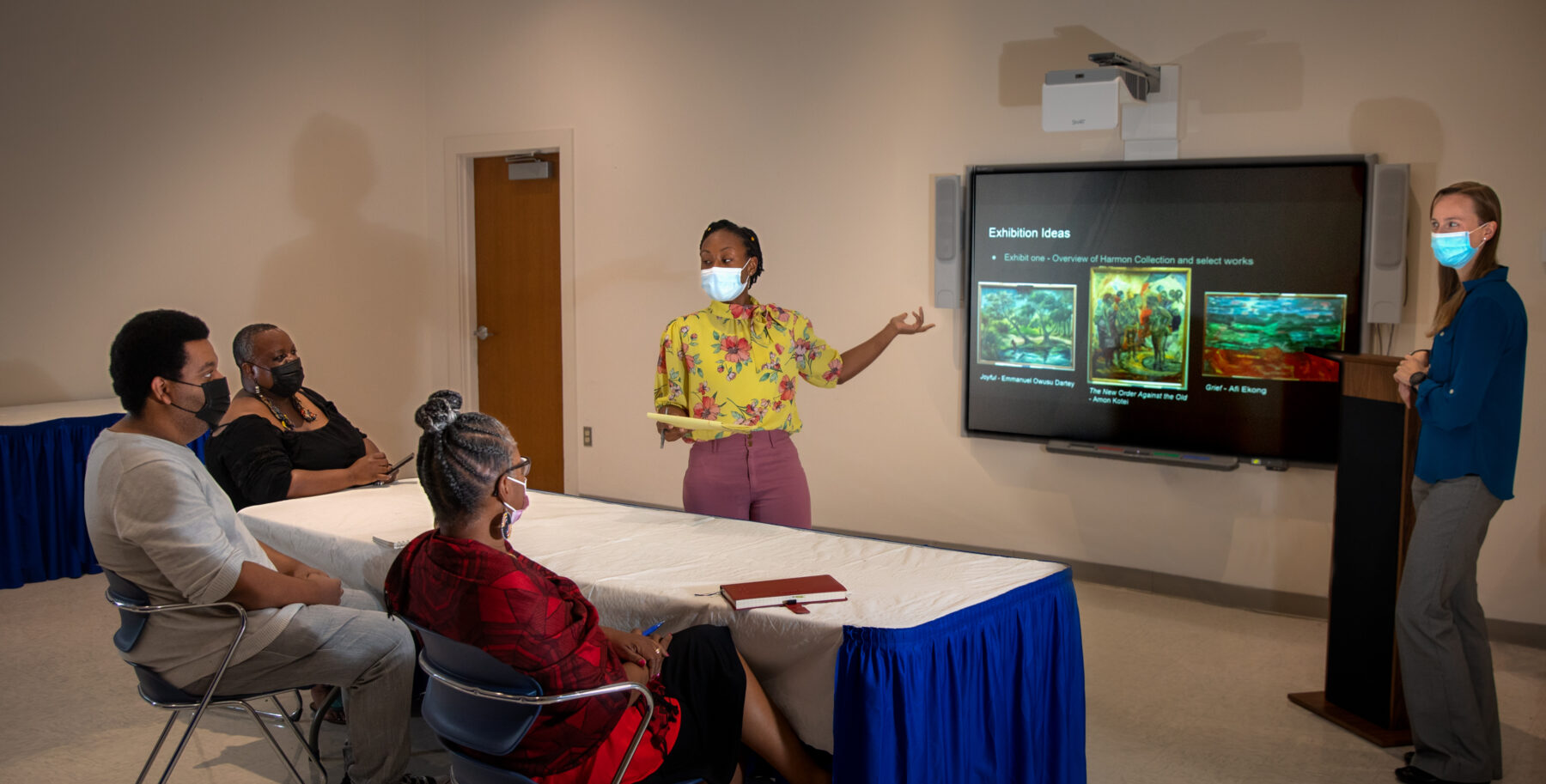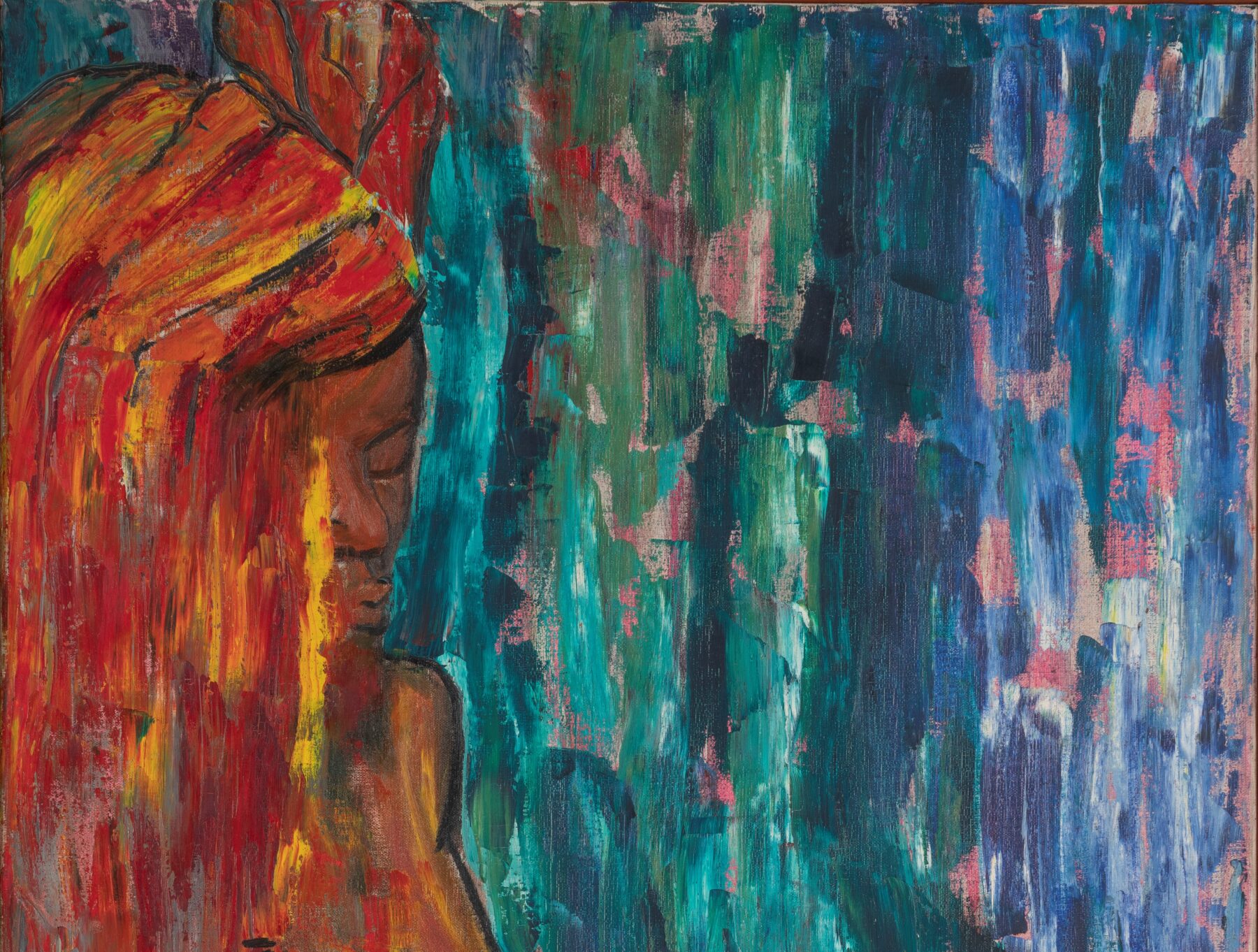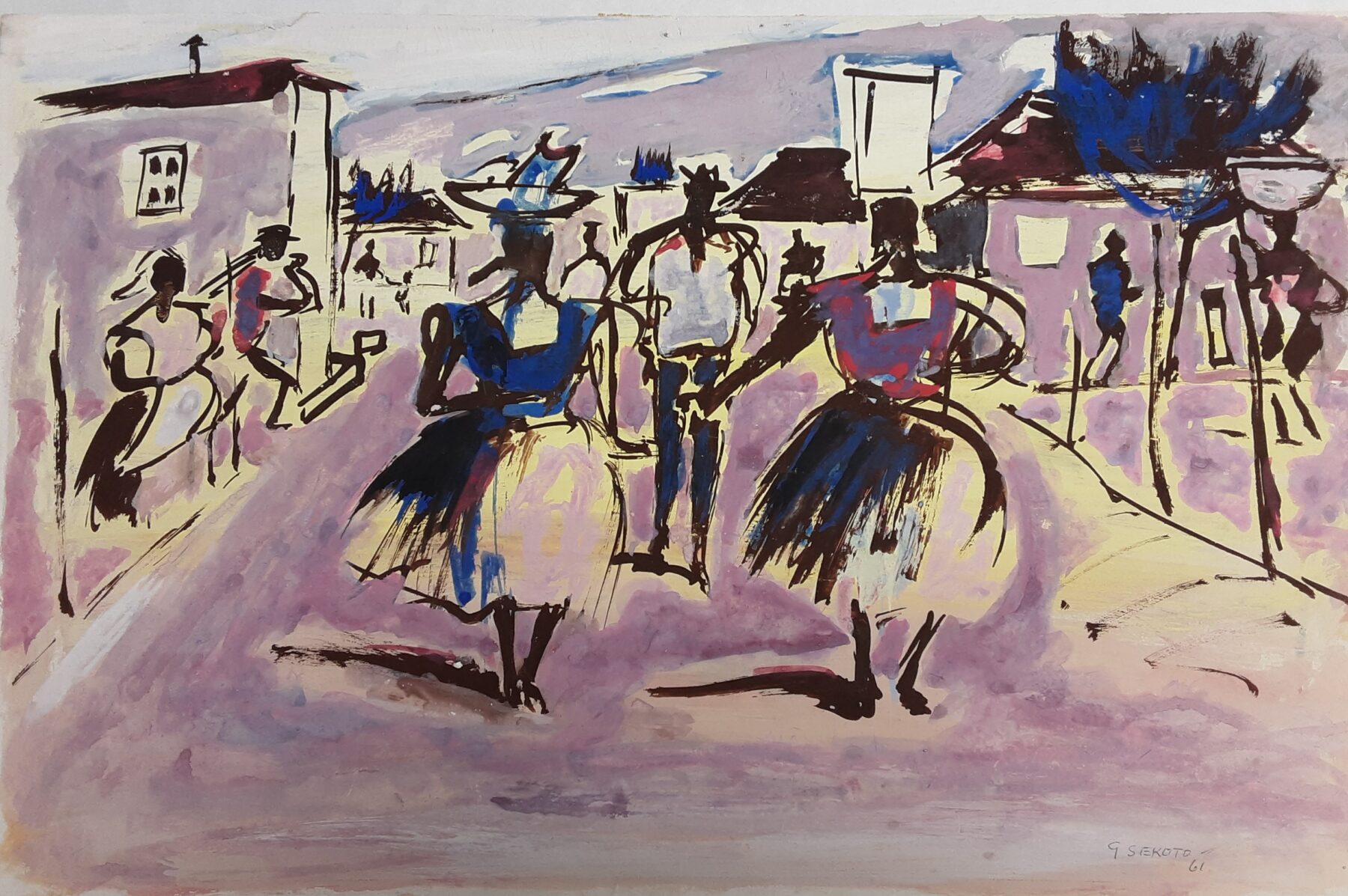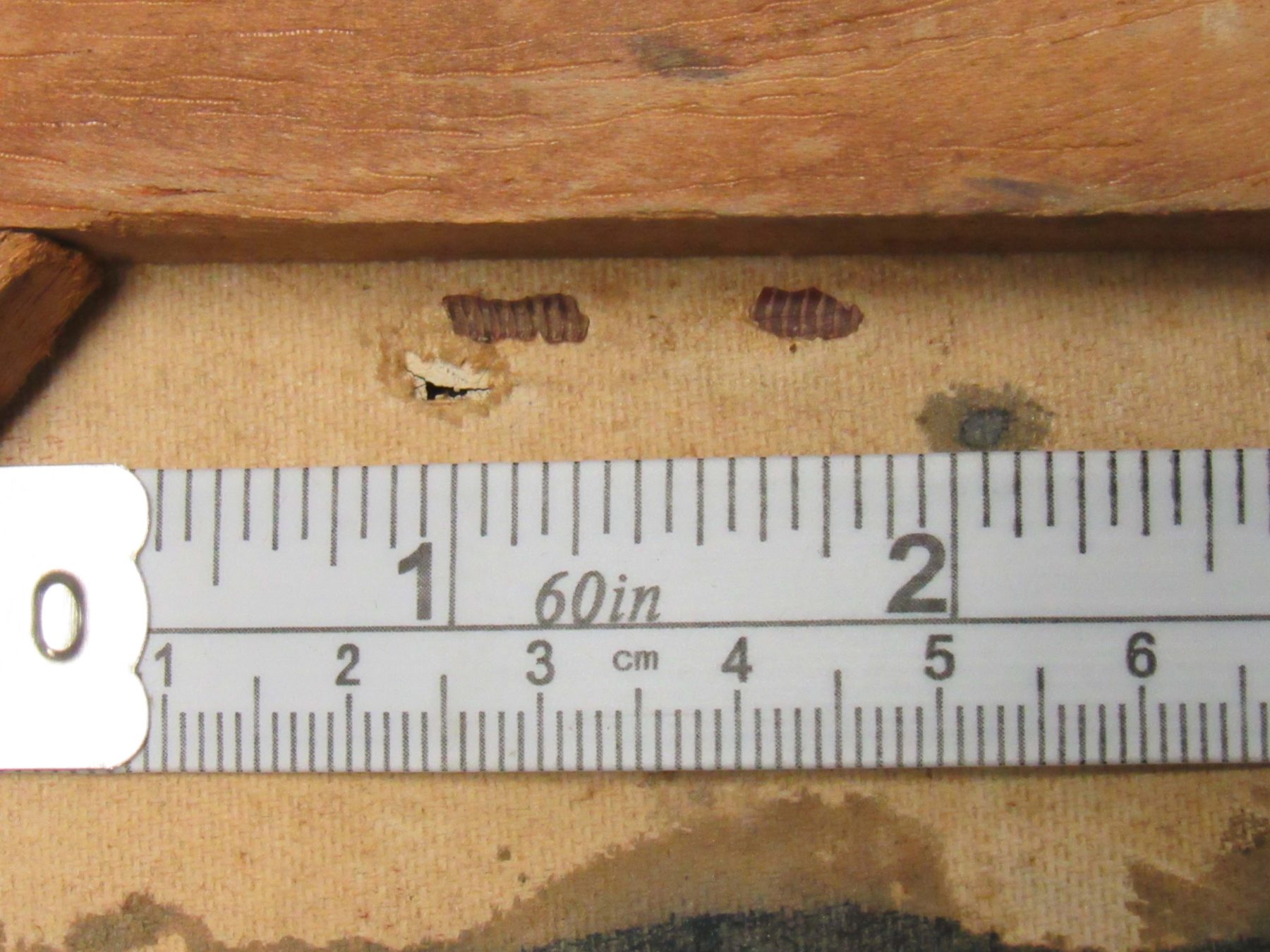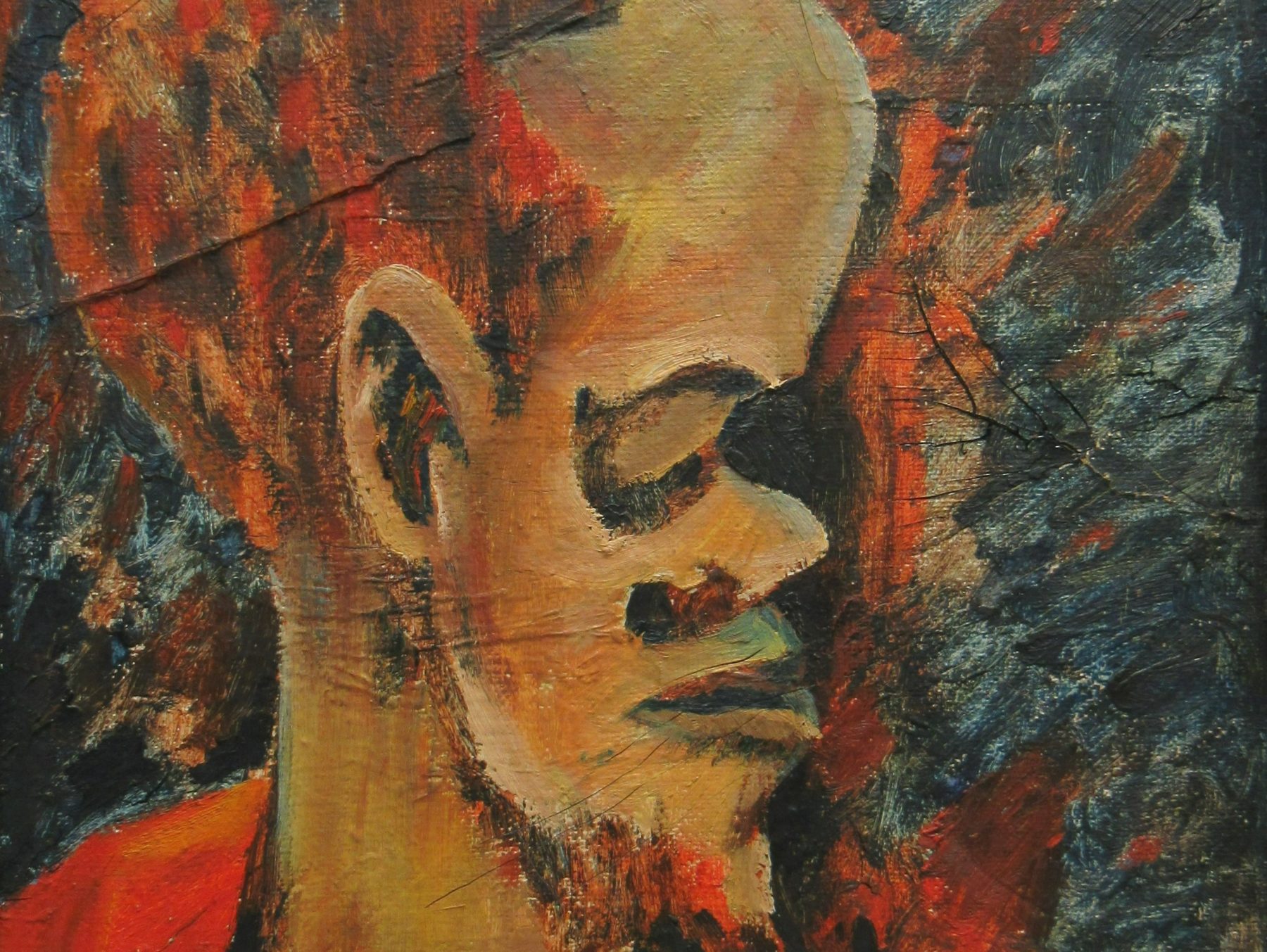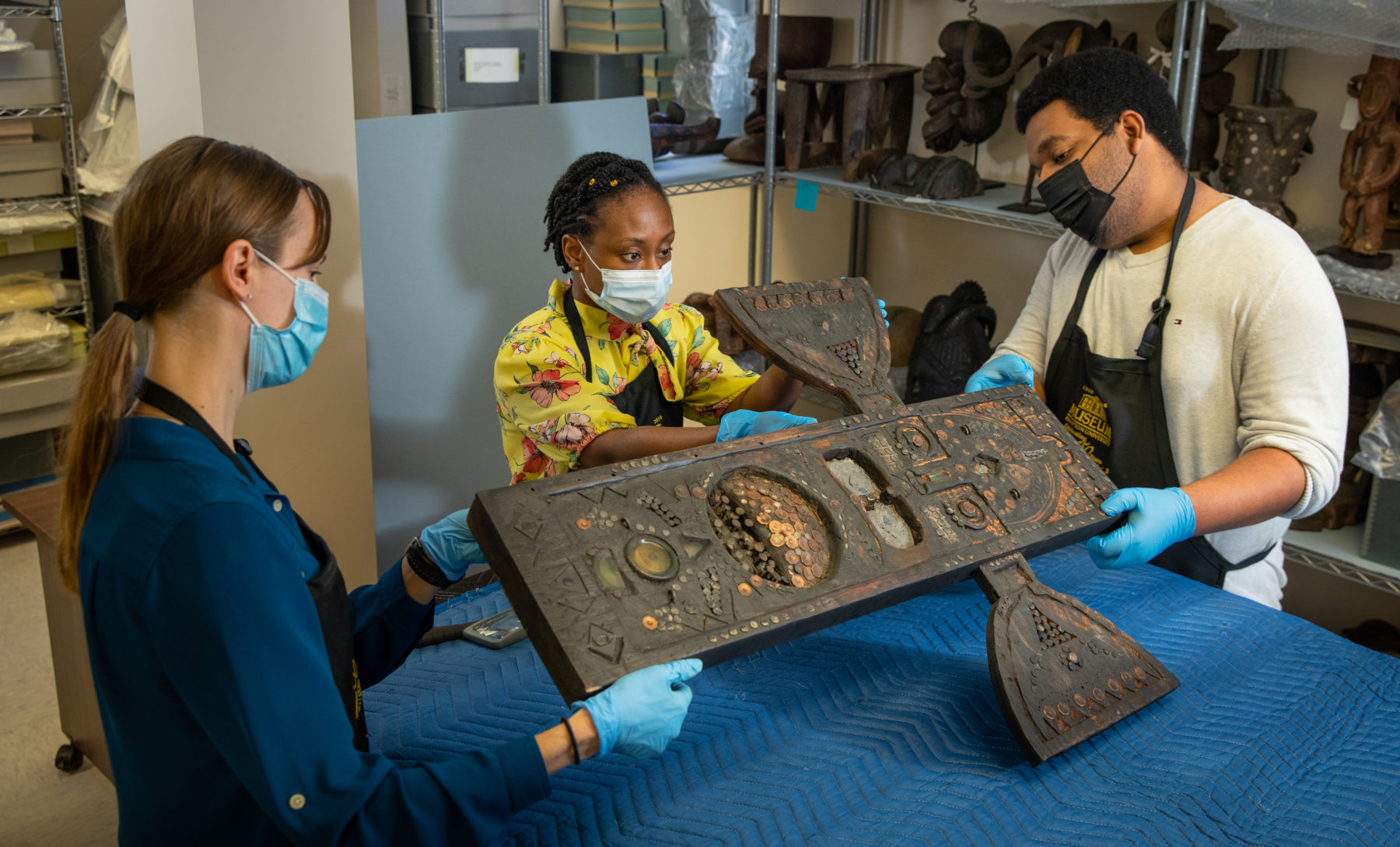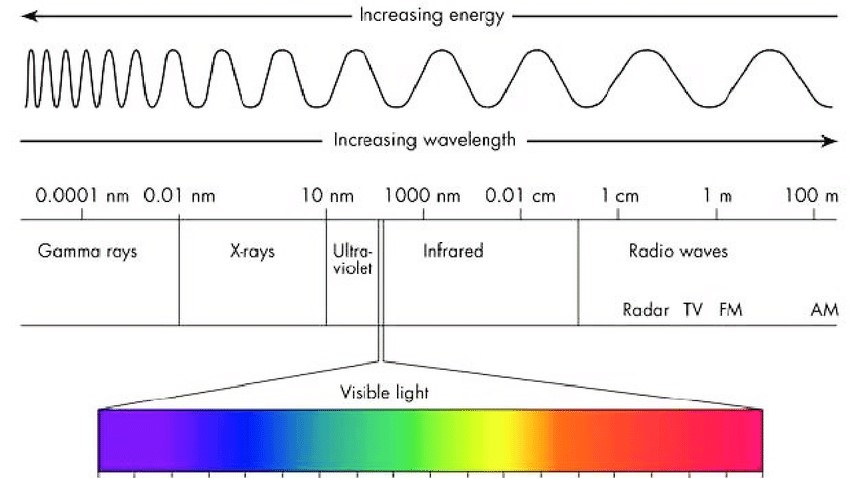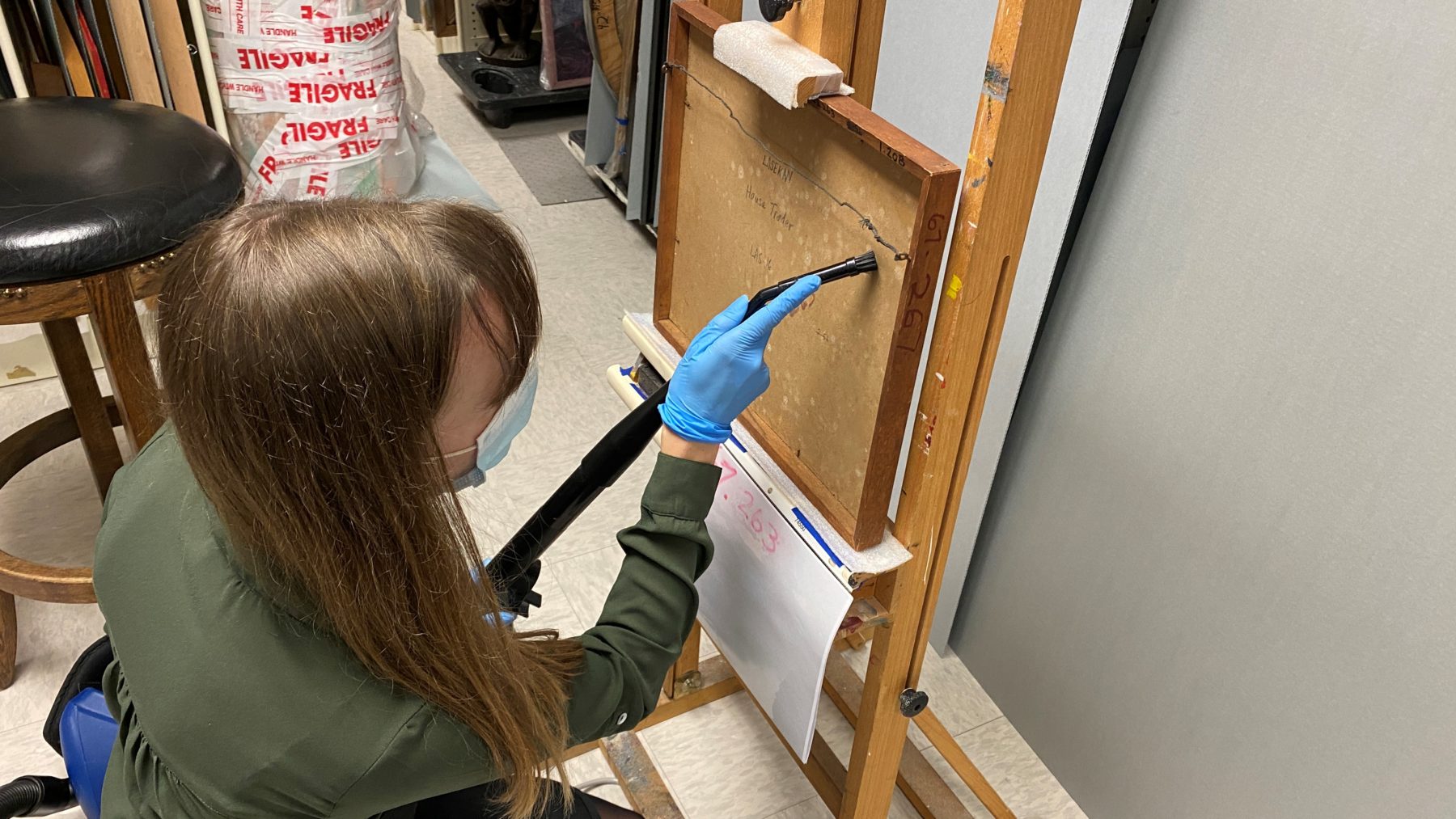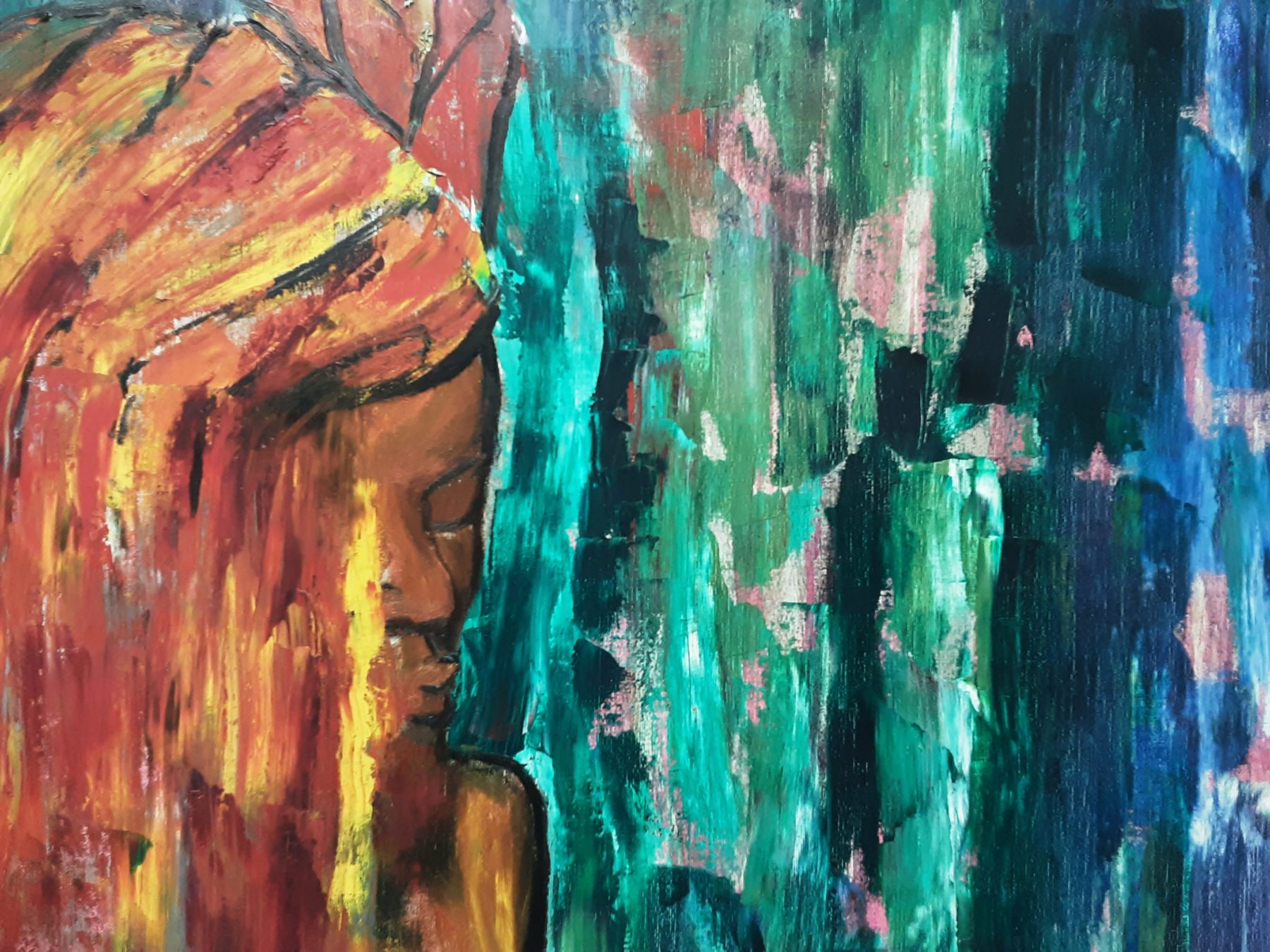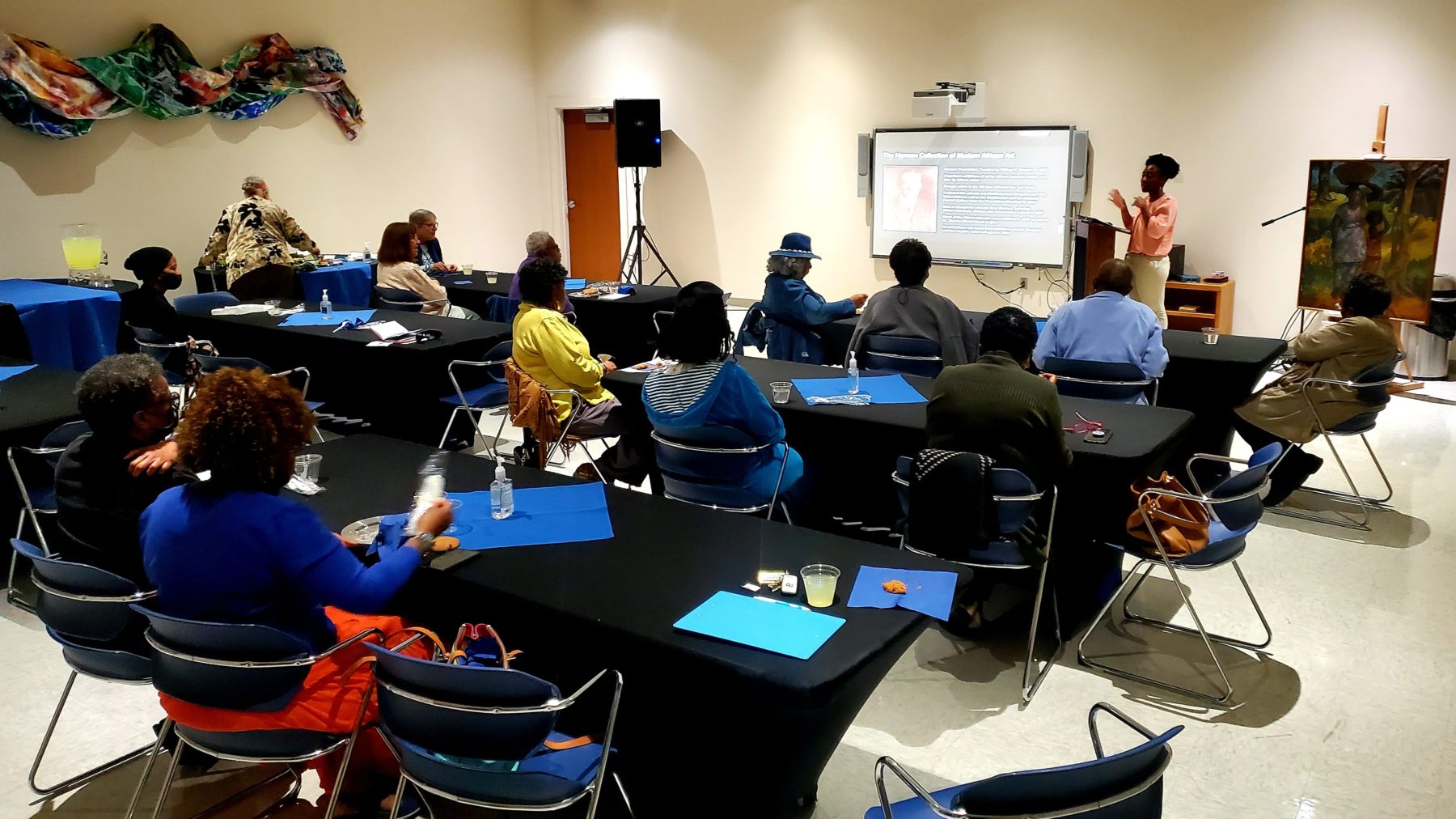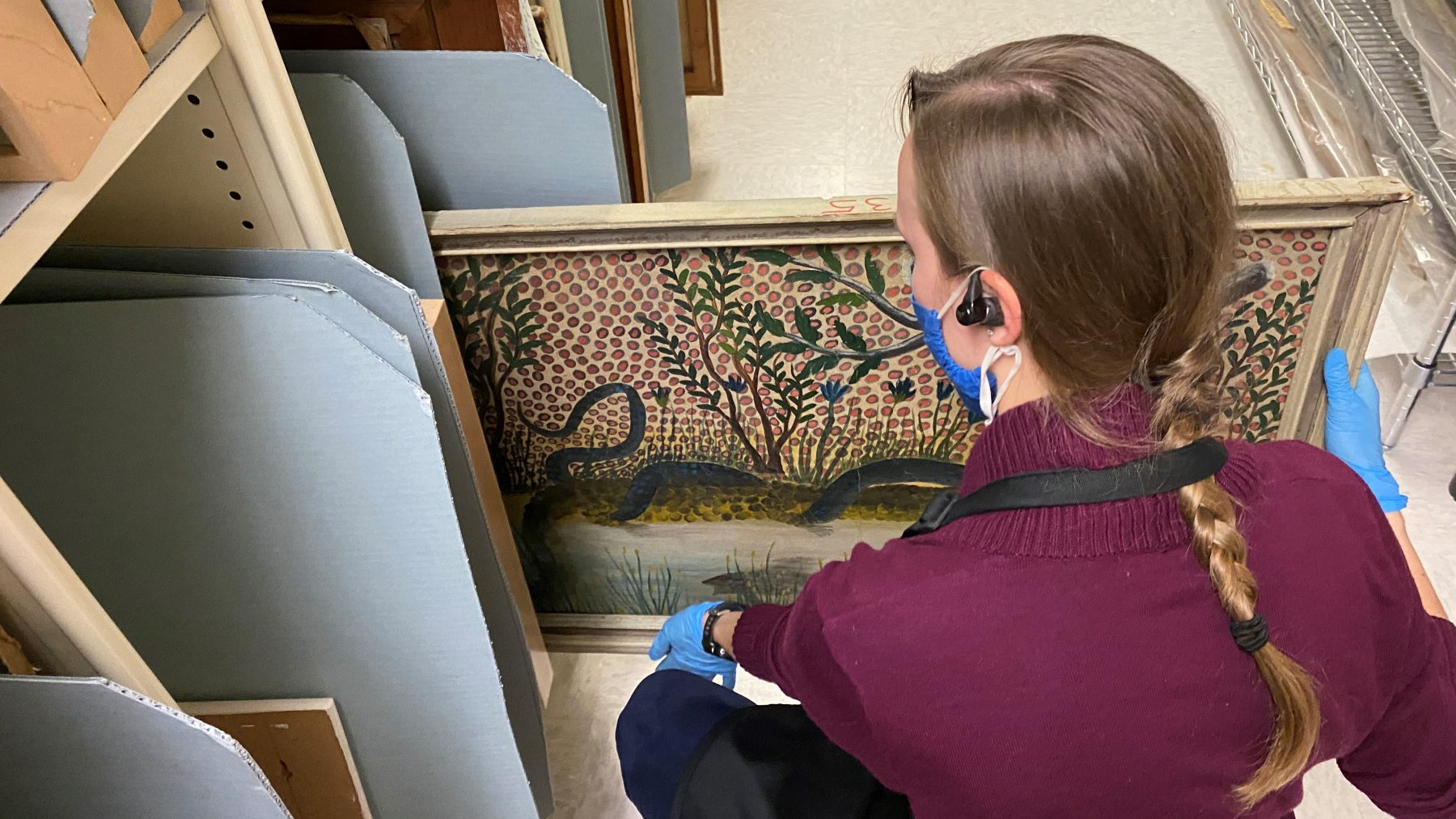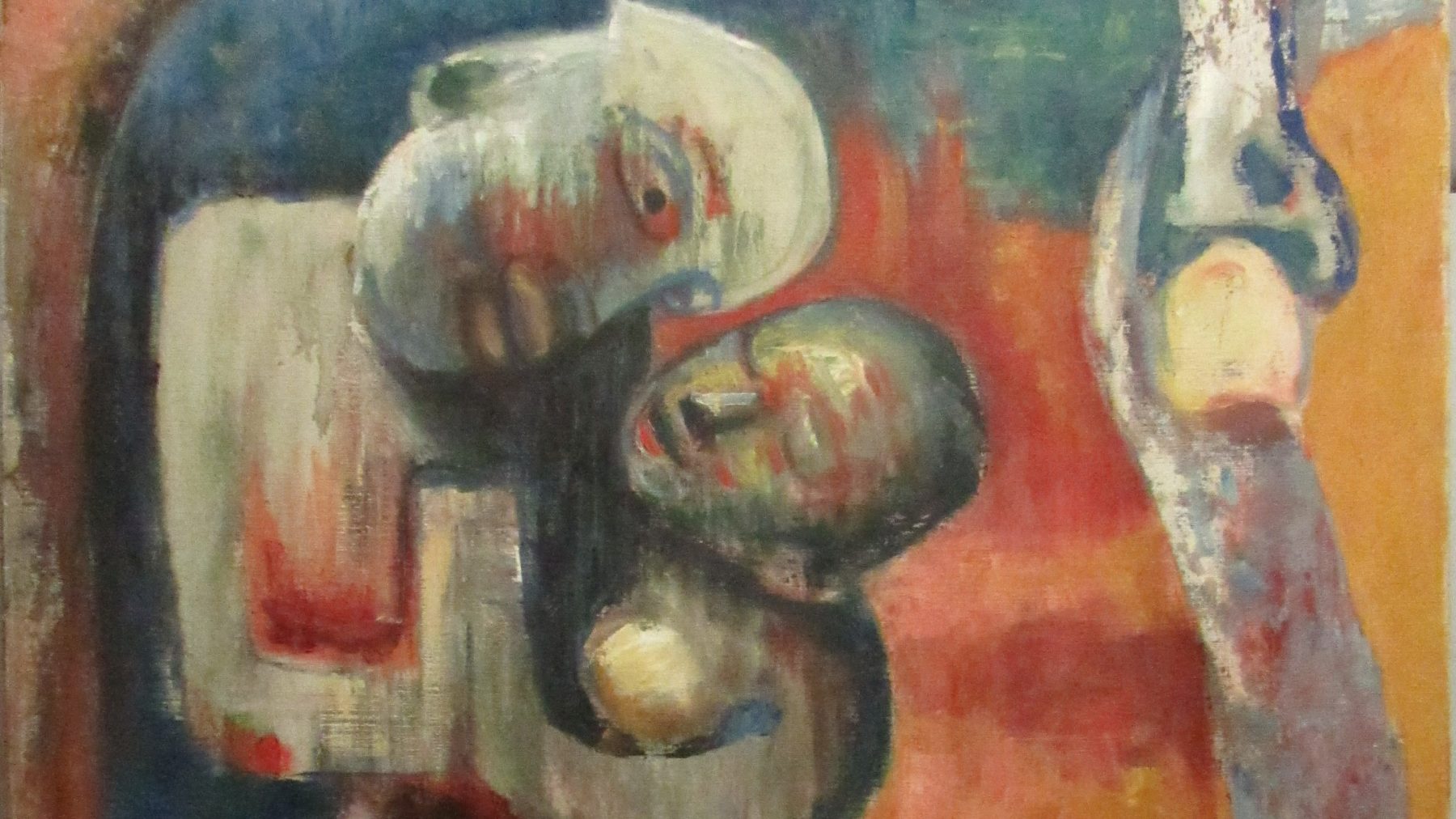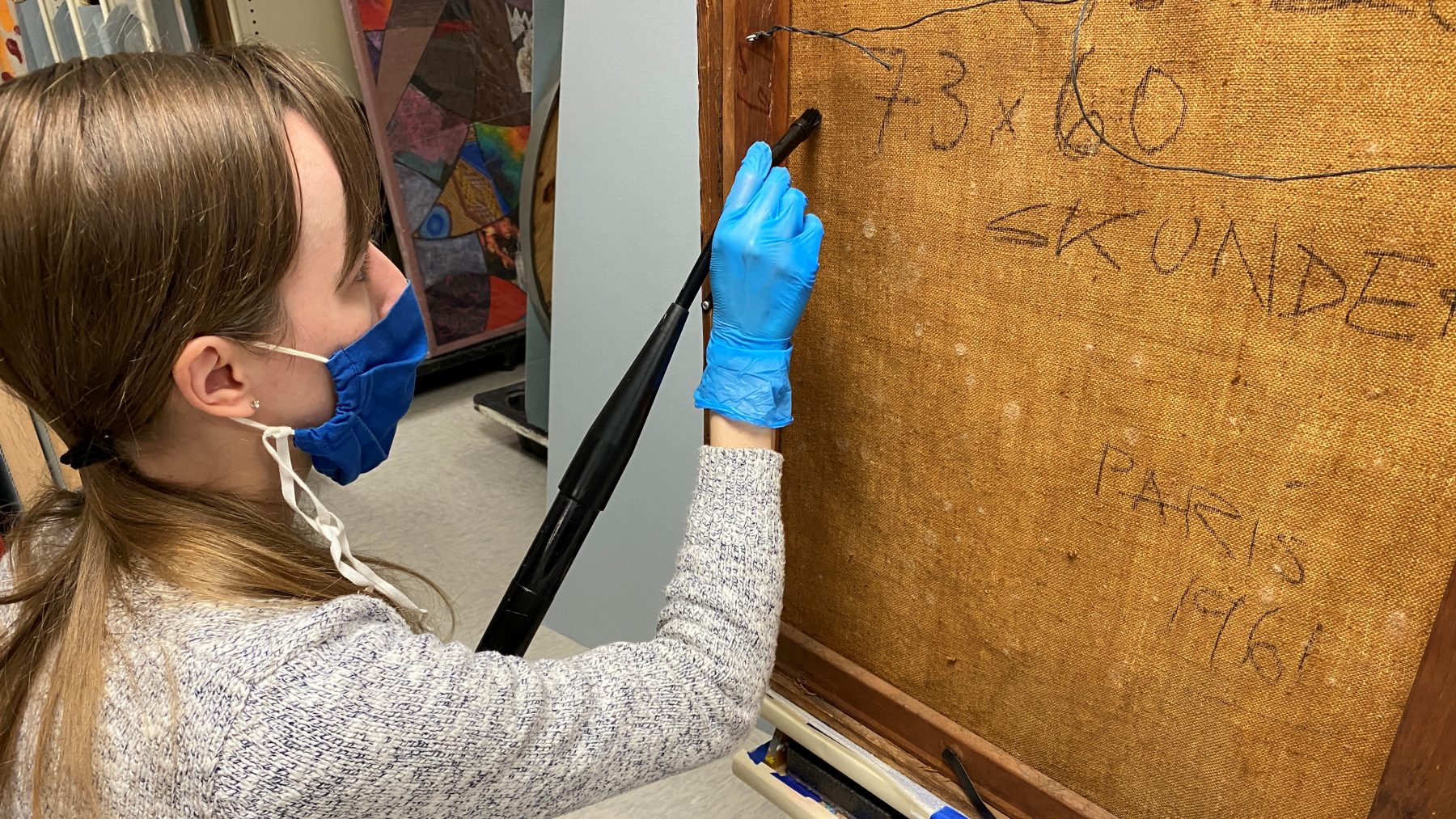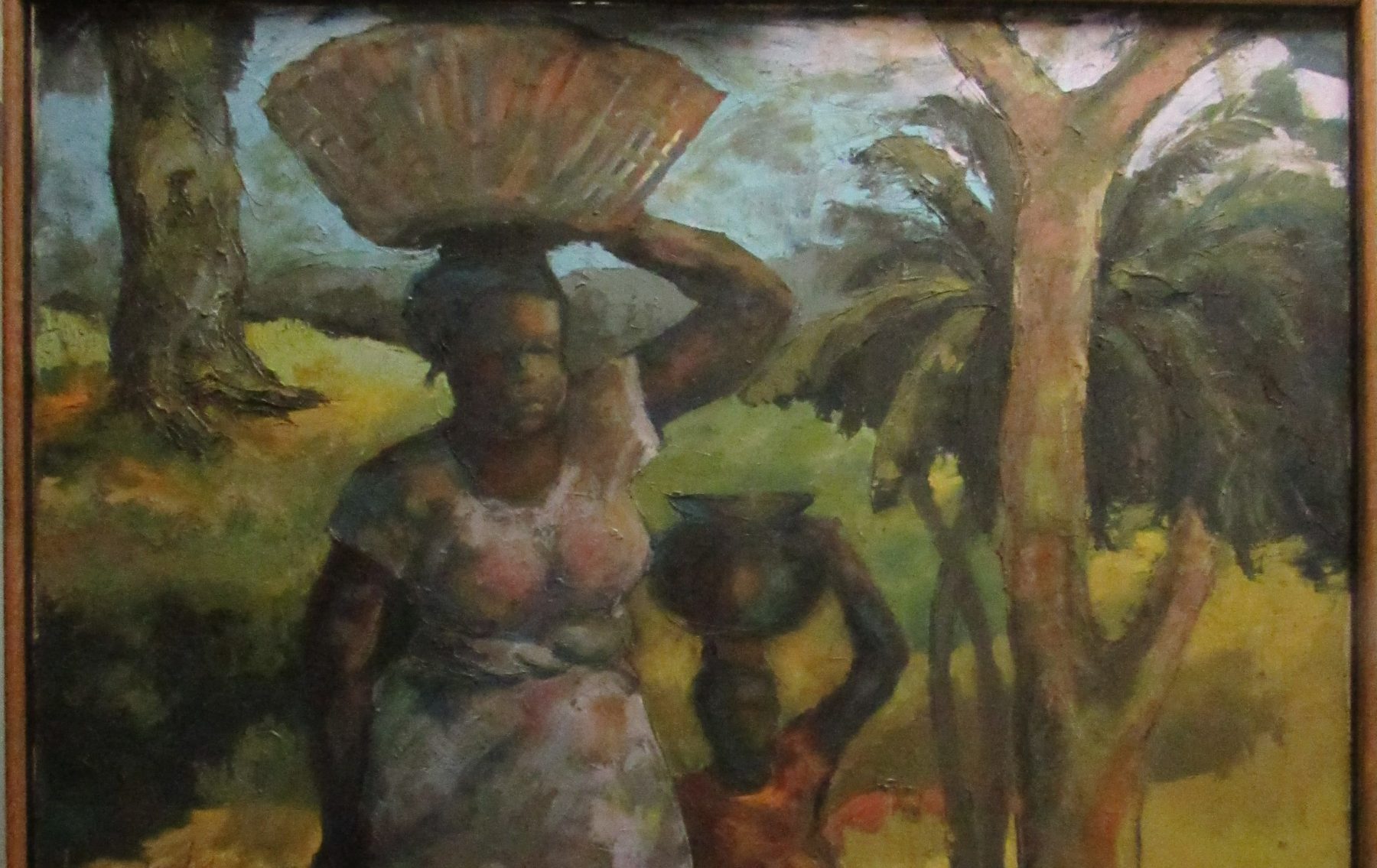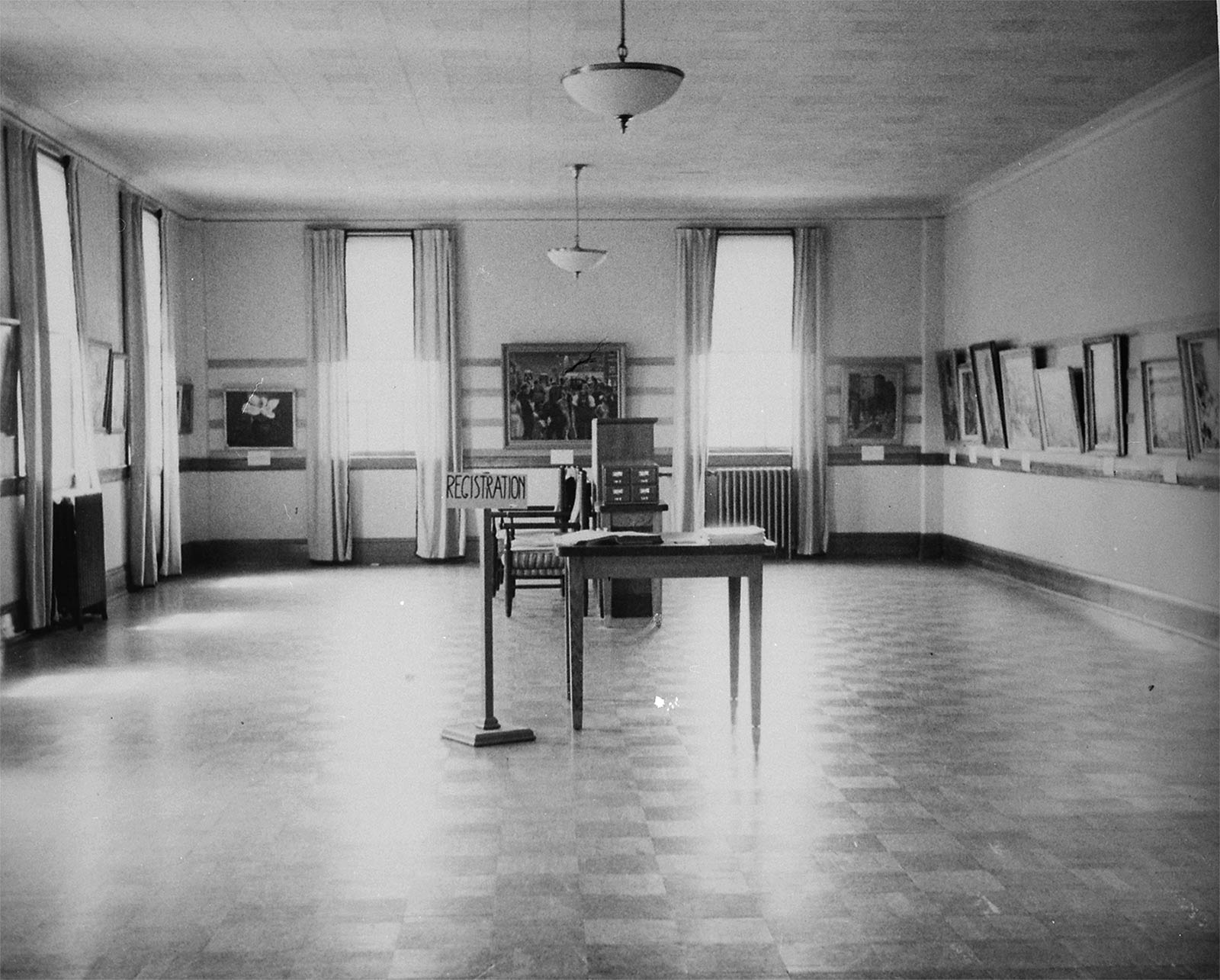A Chrysler Museum of Art and Hampton University Museum Partnership
Blog Posts

Diving into the Waters of The Black Venus
In her 1957 linoleum print, "Black Venus," Margaret Burroughs reimagines historical depictions of Black women, transforming narratives of exploitation into ones of resilience and empowerment. Her work challenges past portrayals and honors the Black female form.
The Andrew W. Mellon Fellowship: Now and Beyond
In this post, I will highlight some of the accomplishments of this project and address two main takeaways that can help those looking to reproduce a similar fellowship program.
Art Spotlight: The Abandoned Hut by Mordecai Buluma
In this blog post Angie and Tashae discuss the symbolism behind The Abandoned Hut by Mordecai Buluma as well as the conservation treatment used to prepare it for exhibition.
Opening of I am Copying Nobody the Art and Political Cartoons of Akinola Lasekan
On April 13, 2024, I Am Copying Nobody: The Art and Political Cartoons of Akinola Lasekan opened at the Chrysler Museum of Art. Here are some highlights from the exhibition.
Tricky Tape and Finicky Frames
In conservation, tape can be tricky! This post discusses the conservation treatment of the painting Recess Time at Farm by Akinola Lasekan.
Biggers and Boghossian: A Diasporic Voyage to Cultural Consciousness
This is an excerpt from the essay Biggers and Boghossian: A Diasporic Voyage to Cultural Consciousness that will be featured in an upcoming exhibition catalogue, available April 2024.
Christ in the Manger: Virginia’s Most Endangered Artifact?
"Christ in the Manger" by Francis Musangogwantamu, along with nine other selected artifacts from other institutions in Virginia, will be featured in an online public voting competition, which will take place from February 20th to March 3rd, 2024. The artifact that receives the most votes will receive the People’s Choice award and a $1,000 grant to be put towards the object’s conservation treatment.
The Similarities Between Akinola Lasekan’s Paintings and Political Cartoons
In this post, we will dive into Lasekan’s painting Grandfather’s Pipe, and his political cartoon The Inextinguishable Fire of the Human Soul, to discuss the similarities between these two visually opposing artworks.
Adventures in Washington D.C.
Tashae and I recently visited the African Modernism in America exhibition at the Phillips Collection and connected with colleagues at two conservation labs, thanks to funds provided by the Mellon Grant for professional development and research.
A Leap of Faith: Akinola Lasekan’s Relationship with the Harmon Foundation
This is an excerpt from the essay A Leap of Faith: Akinola Lasekan’s Relationship with the Harmon Foundation that will be featured in an upcoming exhibition catalogue, available April 2024.
Artist Talk with Jimga
Andrew W. Mellon Curatorial fellow, Tashae Smith sat down with Political Cartoonist and lecturer Dr. Ganiyu Jimoh to discuss his work and the influence of artist and political cartoonist, Akinola Lasekan.
Consolidating Miranda “Olayinka” Burney-Nicol’s Night Dancer
This post introduces Angie Lopez, the current Andrew W. Mellon Conservation Fellow, and shares her journey into the art conservation field. She also discusses her experience of working on her first painting from the Hampton University Modern African Art collection, Night Dancer by Miranda “Olayinka” Burney-Nicol, and her examination of the painting's structure, artist’s technique, and condition.
Serendipity led me to the Chrysler Museum of Art’s internship program
Read this post to learn more about Bria Miller's experience as the Andrew W. Mellon curatorial intern for the Summer of 2023!
Discussion on the Painting Grief by Afi Ekong
NEH fellow in paintings conservation, Katie Rovito, and Andrew W. Mellon curatorial fellow, Tashae Smith, sat down to discuss the Modern Nigerian artist, Afi Ekong and the conservation of her painting Grief.
Update on Our Mellon Grant Funded Project!
We are in year two of this Mellon grant funded project! Here is an update on the work that has been done so far and what is to come.
Mending Tears in Afi Ekong’s Grief
This post goes in-depth on the conservation treatment of the painting Grief by Afi Ekong. Treatment was completed by Katie Rovito, National Endowment for the Humanities Conservation Fellow at the Chrysler Museum of Art. Learn how Katie tackled this treatment, including how she mended tears and inpainted.
What’s in a Name?: Gerard Sekoto’s The Two Women
For part two of this series, we will analyze Gerard Sekoto’s The Two Women, to present how the title of an artwork, its subject and the artist’s own experience can be used to draw conclusions about an art piece.
The Mystery of the Tasty Canvases
Pests, insects, bugs, creepy-crawlies…whatever you call them, they are not good for art collections! These tiny agents of deterioration can cause lots of damage quite quickly, and they may go unnoticed at first. Learn more about how conservators deal with these vicious vermin here.
Our Adventures in Music City
With the research and professional development funds provided by the Mellon Grant, we were recently able to view an exhibition of artwork closely related to our own, which opened at Fisk University Galleries at the beginning of October. We also visited Frist Art Museum and other sites around Nashville, connected with colleagues, and explored the fabulous Music City!
A Conference in Detroit: MRCG Symposium 2022
At the end of September, I was able to attend the Annual Symposium of the Midwest Regional Conservation Guild (MRCG) in Detroit, Michigan. It was a great opportunity to give a presentation about the Mellon project to a group of friendly and insightful conservators. After lots of networking and nerdy conservation discussions, I made it back home, despite the best efforts of Hurricane Ian! Read more about the trip here.
Christianity, Art, and the Harmon Foundation: Part 2
For Part 2 of Christianity, Art, and the Harmon Foundation, we will be examining artworks from Brother Francis Musangogwantamu and Elimo Njau, to see how they were interpreting their Christian faith through art.
Harmon Foundation Modern African Art Collection Statistics
In celebration of completing our survey, we are sharing some interesting statistics about the collection. In sharing these statistics, we hope to spread more awareness about the composition of this awe-inspiring collection of art.
The Paradox of Light: Necessary but Damaging
Light is an unavoidable element of our environment, but it causes irreversible changes to artworks, and therefore is considered one of the agents of deterioration. Read more about how conservators address this paradox here!
Christianity, Art, and the Harmon Foundation: Part 1
Christianity, art, and the Harmon Foundation. How are these all connected? For Part I of Christianity, Art, and the Harmon Foundation, we will be learning about the Harmon Foundation’s involvement in creating and producing Christian missionary films.
Virtual Tree House Summer Camp
In July, we had the opportunity to participate in Hampton University Museum’s Tree House Summer Camp, which this year was a virtual program for children ages 5-12. We described the basics of what a curator and a conservator do, and conducted several activities to help them practice each role.
The Dangers (and Usefulness) of Water
Learn more about another of the Ten Agents of Deterioration: water! Its effects on artworks can be quite damaging when they are uncontrolled and unexpected. It can also lead to the growth of mold. But water can also be a useful tool for conservators who need to treat artworks. What’s the difference? Keep reading!
Artist Talk: Grief by Chief Lady Constance Afiong Ekong
For my first post of the Artist Talk series, I will be sharing information on the prolific artist Chief Lady Constance Afiong Ekong, also known as Afi Ekong. Ekong was a present and influential figure in the Nigerian art scene until her death in 2009. Although we can not talk with Ekong, we can still have a conversation with her paintings.
Palm Wine: A Cultural Touchstone
This collection of Modern African Art has much to teach us, and has led to some very interesting research “rabbit-holes”. Discover more about an important cultural element that is depicted in several of the artworks, and has a very broad history, from prehistoric times to the 21st century.
Outreach Programs with The Links, Incorporated and the Osher Lifelong Learning Institute
One of the goals of this grant project is to present outreach programs to the public, both virtually and in-person. So far, we have had the opportunity to participate in two such programs, partnering with The Links, Incorporated and the Osher Lifelong Learning Institute. In this post, we will be sharing the details of these programs, including feedback we received and our key takeaways.
Physical Forces and Inherent Vice
Physical forces, like drops, scrapes, or bumps, may be what most people think of when it comes to damages to artworks, so this is the first Agent of Deterioration I am covering. There may also be inherent aspects which can cause cracks to form in paintings, and the consequences and treatment options for these can be quite different. Read more to learn why!
The Garden of Eden v.s. The Garden of Eden with the Fall of Man
For this post we will be taking a closer look at Jimo Bola Akolo’s The Garden of Eden and Peter Paul Rubens’ and Jan Brugehel the Elder’s The Garden and Eden with the Fall of Man to see how the same idea or story can be depicted differently by artists.
Agents of Deterioration and Preventive Conservation
Protecting collections starts with understanding the ways that damage can be caused to objects, often called the 10 Agents of Deterioration, as well as how to prevent their effects. Preventive conservation is the term used to describe the actions taken to avoid future interventive treatment and reduce risks. Learn more here about the upcoming conservation blog series!
What’s in a Name?: Emmanuel Owusu Dartey’s A Market Day
We will start this series,“ What’s in a Name”, with Emmanuel Owusu Dartey’s, A Market Day to present how the title in conjunction with the subject of the piece, as well as our own personal experience can be used to draw conclusions about an art piece.
Origins of The Harmon Foundation and Collection
The Harmon Foundation was an organization based in New York City, which supported and promoted the work of African and African American artists.
